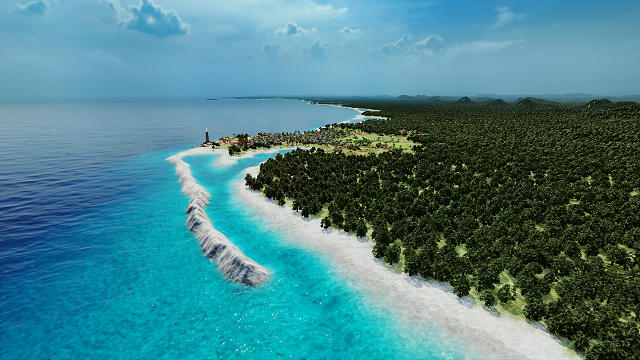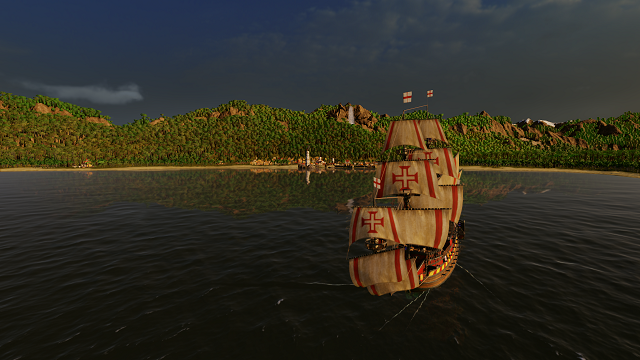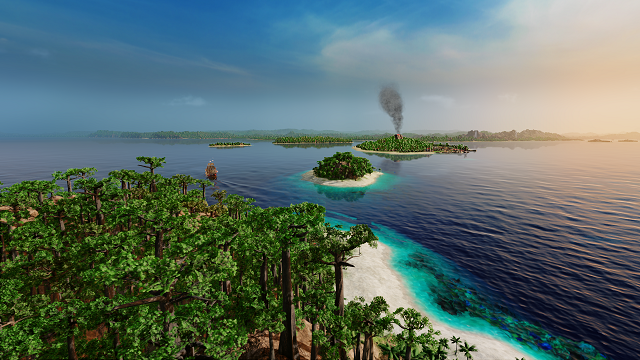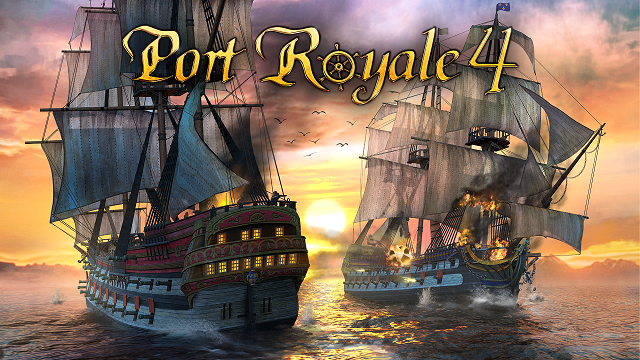At first glance, you might think Port Royale 4 is a high-seas adventure game, especially if you’ve not followed the franchise. The beautiful Caribbean setting and sea full of swashbucklers definitely makes it look like a successor to something like Sid Meier’s Pirates!
Look a little closer, however, and you’ll know that’s a false flag.
Port Royale 4 is much more akin to factory and supply chain management games, just with an “Age of Pirates” skin plastered over the top. This is a cutthroat engine builder that encourages you to play as the worst type of capitalist.
t’s perfect for the right type of gamer, but there are some quirks of the genre and other elements tacked on that could make a sizable chunk of gamers bounce right off.
Port Royale 4 Review: Old-School Capitalism

It’s extremely nice to pause Port Royale 4, set up half a dozen new trade routes, assign different convoys to them, then unpause and watch everything go into motion.
At its core, Port Royale 4 is a game that’s about controlling the economy through production and trade. Whether you’re playing one of the game’s structured campaigns or its sandbox mode, your goals are the same: accumulate gold and economically choke out your rivals.
There are multiple ways to achieve that outcome, but a huge chunk comes from moving goods around the Caribbean.
When you first begin, most of the emphasis is on trade. You start out with a few small ship convoys that can sail to different cities, buying and selling goods along the way. You can do this manually, sending ships to different ports and filling the cargo holds with the various items and goods you need.
The principle of supply and demand is in full effect here, as is a hierarchy of needs. Each city produces certain things, like cotton, fruit, or grain. Big money comes from transporting essential goods from a producer to another city that needs it.
Once basic needs like food and shelter are taken care of, citizens will begin searching for luxury goods. Nice furniture, rum, tobacco, luxury clothing: these items demand higher prices but will sit idly in your ships’ holds if citizens of various cities can’t afford to put food on the table.
As your fleet grows bigger, you’ll need to set up automated trade routes. These are fairly intuitive, and you can toggle all sorts of switches to determine how much of what to buy as your ships go about their business. This is where the “factory management” comparisons come in.
It’s extremely nice to pause Port Royale 4, set up half a dozen new trade routes, assign different convoys to them, then unpause and watch everything go into motion. Watching all your little ships sail around and your money reserves tick ever higher is reminiscent of watching model trains run: it’s oddly satisfying and easy to get lost in.
A Barrel of Rum

Trade routes aren’t the only way to control the Caribbean economy in Port Royale 4. You can also build your own production facilities in different cities, changing the supply and demand balance, running your foes out of business and double dipping into expensive or rare commodities.
Say you want to start controlling grain production in the area. You could appeal to your viceroy for multiple building permits, allowing you to build more housing and additional fields in multiple cities along trade routes. An influx of workers will come in, filling your fields and increasing the amount of grain being shipped to other cities.
That’s not all. The influx of grain will have ripplling effects on the supply chain. If you were out in front of things, you perhaps built some breweries in cities later along the trade route. Now, you’ll get money when the market buys your grain, which your ships will then carry down the route. You’ll get money when those ships sell the grain to the breweries, who will use it to make beer.
If they are your breweries, you’ll get money when the market buys that beer, which your ships will then cart further down the line, making you even more money when some up-and-coming city decides that Caribbean beer sounds like a good option.
Meanwhile, other nations and convoys are trying to do the same thing. The Caribbean economy is nicely balanced, and tilting things significantly in one direction will always cause blowbacks in another. Still, Port Royale 4 does a pretty good job of bringing out the ruthless merchant in you.
Choppy Seas

Ship combat in video games is notoriously tricky to get right, so it’s nice that Kalypso tried something with it but… it just misses the mark.
If all Port Royale 4 had going for it was this economy simulation, it would be fine but lacking.
The good news is that there are other elements to keep you busy: searching for treasure maps and partaking in other quests throughout the Caribbean, engaging in naval combat with your nation’s enemies and, of course, hunting for pirates.
The bad news is that none of these elements are very fun.
Occasionally, while sailing about, a star will appear on your map that indicates a quest. Most of these quests are fairly simple: deliver a set number of goods to a certain town by a certain date, search a specific area for something, etc. The problem is that most of these are simple fetch missions that do nothing to challenge you. Instead, they force you to disrupt a trade route or keep a convoy on standby to go hunting.
No, thank you.
We talked about Port Royale 4‘s combat in our beta impressions, and it still just doesn’t really gel with the rest of the game. Turn-based combat doesn’t work for ships. They’re supposed to be these unwieldy beasts, fighting against the powerful force of the ocean to even get in position to deal any damage.
With turn-based combat, whether you’re battling pirates or other enemies of the crown, everything feels too neat and tidy. In a massive naval battle, things should feel chaotic and like they could turn on a change of the wind. In Port Royale 4, I move one ship, firing on an enemy. Then, they move one ship, doing the same. There are a few wrinkles to the formula, like captain’s powers, but, without cover, terrain, and other variables to account for, it just feels boring.
Ship combat in video games is notoriously tricky to get right, so it’s nice that Kalypso tried something with it but… it just misses the mark. After my first few naval battles, I found myself actively avoiding combat whenever possible. Luckily, you can automatically conclude most battles. On the other hand, that really limits much of the game to “watching your ships sail by.”
Port Royale 4 Review — The Bottom Line

Pros:
- A good looking Caribbean adventure
- Immersive setting and really dives in (there’s even a sea shanty in the opening cinematic!)
- Satisfying, assembly line-style gameplay
Cons:
- Combat is slow-paced and flawed
- Not much interesting to do beyond central trading elements
- Certain elements are easy to lose track of
There’s a lot going on beneath deck in Port Royale 4, and much of it works very well. Setting up your perfect trade routes and watching all the moving pieces sail into action hits all those lizard brain elements that we love, and optimizing things when some new wrench hits the system is always a good time.
That said, these waters feel a little shallow. If combat or… something was more interesting, this game would feel like a slam dunk for almost anyone that’s a fan of this genre. As is, it feels like a very niche title: solid, but not overly exciting.
[Note: Kalypso Media provided the copy of Port Royale 4 that was used for this review.]










Published: Sep 23, 2020 02:26 pm